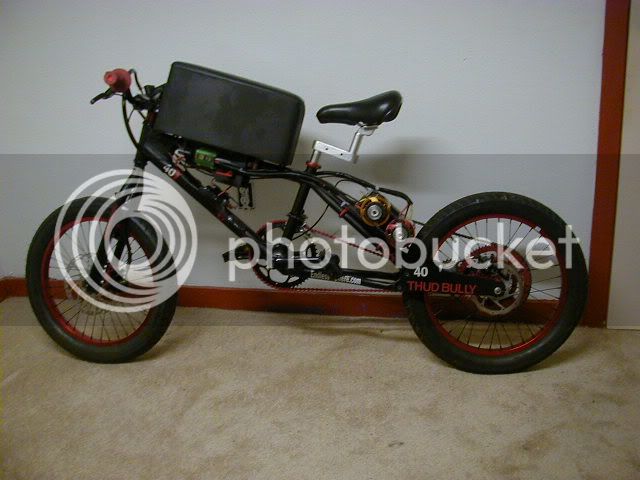I'm jumping in and concluding the orginal topic from pages 1-3.
Thanks to everyone who chipped in (pages 1-3). Thought I’d give everyone an opportune to openly voice their concerns. Every individual perspective was informative. Here’s a summative list of the concepts you no doubt have already read about:
1. Bracketing by lap times
2. Bracketing by top speed
3. Battery/controller power level,
4. Power inputted
5. Power outputted
6. Amount of battery capacity mounted
7. Chip or watt meter power level
8. Weight of race bike or bike/rider weight ratio
9. Volunteer self-classification
10. No grouping at all
11. Entry class and everyone else class
Bear in mind that we are still motorbike racing guests. One theme that popped up thru out was ‘mixing e-bikes with the gas bikes’. Several ES PM’s were sent, 1 from the MB forum, expressing excited support of mixing lo-powered e-s and small 4strokes. The clamoring was for a lot more mixing, but the 1 class is neat. Seems 1000W is encouraged but other e-levels suited to sub 35mph small 4stroke speeds would likely fit in.
About revising racing categories; several are persuasive, except the part about us or me being f***ing fool(s) Hey, glad to take a bullet for ‘ole MBR. Some of us aging e-gear-heads are concerned about the rider weight to power ratio. The bracketing by radar clocking would be doable; we already have the Grange data. I remain hopeful, yet cautious due to the reality of volunteer labor requirements and widespread acceptance by our wider motorbike community, as to some racing category revisions as the sport grows.
To ES, LSU is playing Crimson Tide this weekend, and I have a life to return to. I likely won’t be reading this thread in the future. PM me if you wish to express any follow up concerns and I'll respond.
Oh and to give a heads up to some, and particularly Luke.
The rule of <9K, no 8”, 7”, 6” diameter electric motor will be classified as ‘unlimited’ remains. Paul_D took top honors with a 3.15” motor. If you or anyone wants to run in the coming “AGK Monsta’ Race”, you gotta run a 5” or smaller electric.
Carry on

Will aka SoSauty aka Smoke





